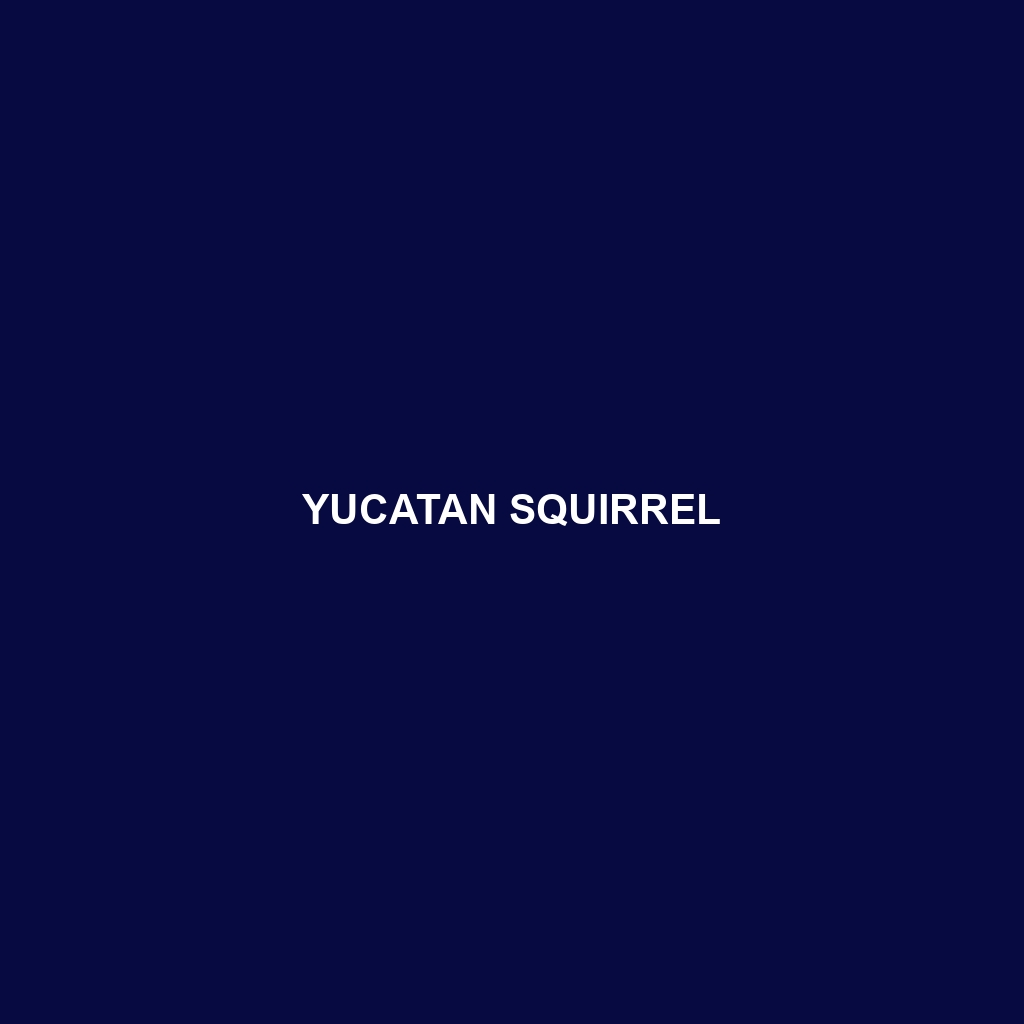Yucatan Squirrel Overview
Common Name: Yucatan Squirrel
Scientific Name: Otospermophilus yucatanensis
Habitat: The Yucatan Squirrel is primarily found in the subtropical forests of the Yucatan Peninsula in Mexico. This species thrives in a variety of environments, including tropical dry forests, deciduous forests, and areas with abundant tree coverage. They are often spotted in both protected areas and human-altered landscapes, adapting well to urban settings while still favoring regions rich in native vegetation.
Physical Characteristics: The Yucatan Squirrel typically measures between 20 to 30 inches in length, including a bushy tail that can be almost as long as its body. They exhibit striking reddish-brown fur with white underparts and dark stripes running down their back, making them easily recognizable. Their sharp claws and agile limbs enable exceptional climbing skills, which are essential for their survival in forested habitats.
Behavior: Yucatan Squirrels are diurnal, predominantly active during the day. They are known for their social behaviors; often seen playing or foraging in small groups. Their vocalizations include chattering and alarm calls, which they use to communicate with others of their species. Nesting behavior is also notable, as these squirrels build nests in trees to protect themselves from predators.
Diet: The Yucatan Squirrel’s diet primarily consists of fruits, nuts, seeds, and tender leaves. They are particularly fond of acorns and various types of tropical fruits available in their habitat. This species exhibits foraging behaviors that include storing food in tree hollows, which can be pivotal for food availability during the dry season.
Reproduction: The breeding season for the Yucatan Squirrel typically occurs in the early spring. During this time, females can give birth to litters of 2 to 5 offspring after a gestation period of around 6 weeks. Young squirrels remain in the nest for several weeks before they begin to explore their surroundings and learn survival skills from their parents.
Conservation Status: Currently, the Yucatan Squirrel is classified as “Least Concern” by the IUCN Red List, indicating it is not under immediate threat. However, habitat loss due to deforestation and urban development poses significant risks to their population in certain areas, making ongoing conservation efforts essential.
Interesting Facts: One fascinating aspect of the Yucatan Squirrel is its ability to thrive in both wild and urban environments, showcasing remarkable adaptability. Additionally, these squirrels are known to perform acrobatic feats when chasing after each other or escaping from predators, captivating onlookers with their agility.
Role in Ecosystem: The Yucatan Squirrel plays a crucial role in its ecosystem by aiding in seed dispersal, which is vital for the regeneration of forest flora. As they forage for food, they inadvertently contribute to the growth of new trees and plants, thus maintaining the balance of their habitats and supporting biodiversity. Their presence also serves as an important food source for various predatory animals, ensuring a well-functioning food web.
